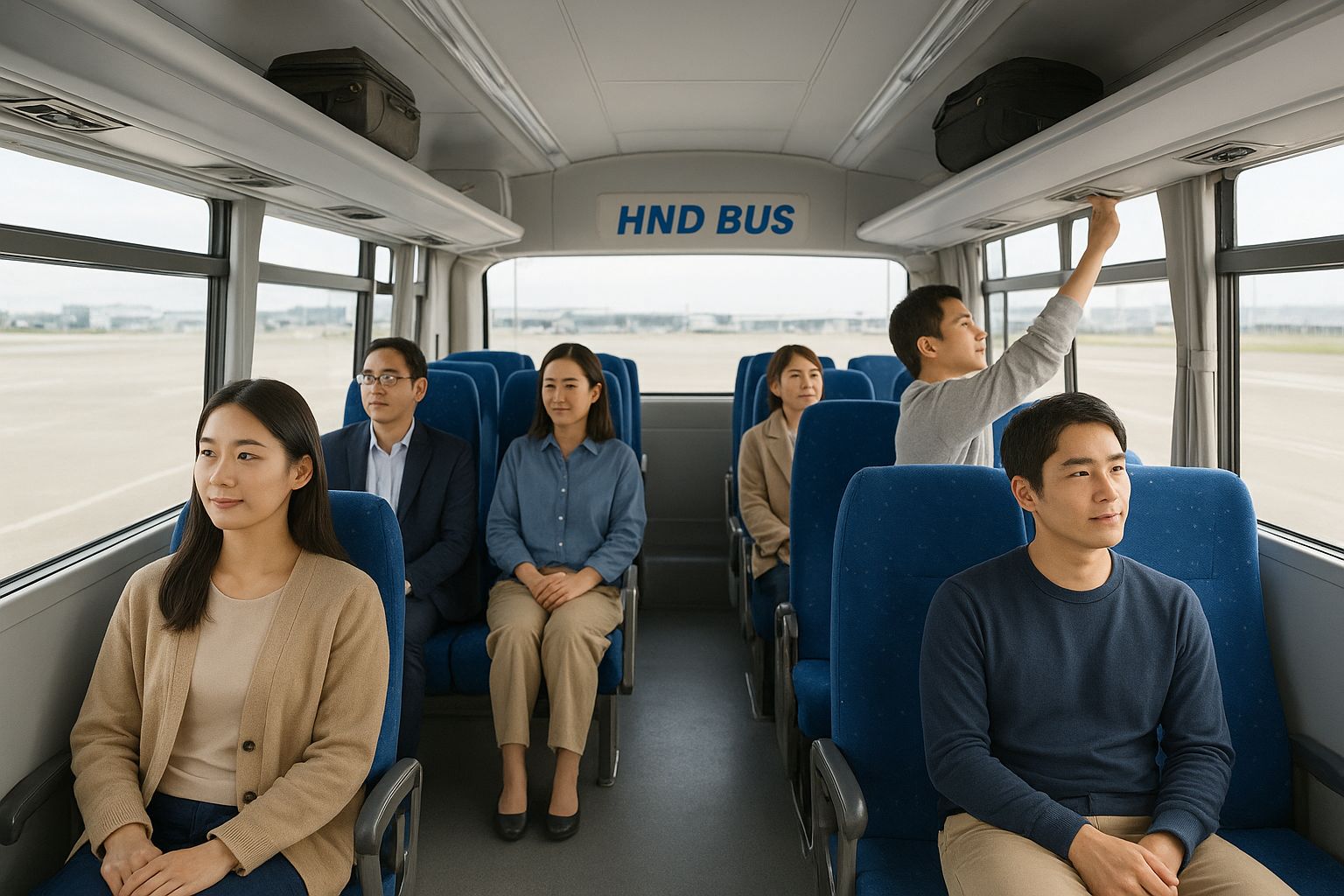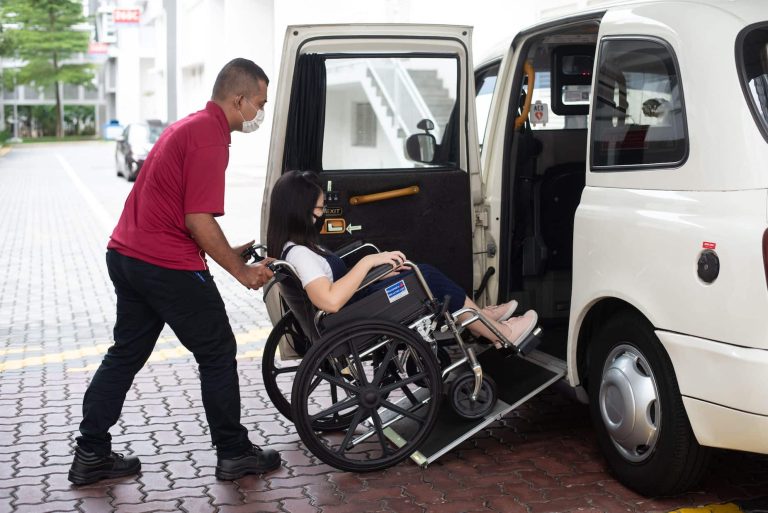Understanding Seat Reservation Policies
Airline seat reservation policies can feel like a maze of rules and restrictions, but understanding the basics will save you time, money, and frustration. Each carrier operates differently, with some offering complimentary seat selection at booking while others charge fees for anything beyond basic assignments.
The key lies in knowing what you’re paying for and when to invest in premium options. Budget airlines typically charge for all seat selections, while full-service carriers often include basic seats in your ticket price. Reading the fine print before booking helps you budget appropriately and avoid surprises at check-in.
Timing plays a crucial role in seat availability and pricing. Airlines release seats in phases, sometimes opening up better options closer to departure. However, waiting too long can leave you with limited choices or separated from your travel companions.
Overview of Seat Reservation Types
Airlines categorize seats into several tiers, each with different pricing and benefits. Standard economy seats form the baseline, usually included in your ticket price or available for a small fee. These offer basic comfort without extra legroom or priority boarding privileges.
Premium economy seats provide additional legroom, wider seats, and sometimes enhanced meal service. They cost more than standard options but less than business class. Exit row seats offer extra legroom but come with responsibilities and restrictions for certain passengers.
Importance of Early Booking
Booking your seats early gives you the widest selection and often the best prices. Airlines typically release their seat maps 330 days before departure, allowing advance planning for important trips. Early bookers can secure preferred locations like aisle or window seats in desirable sections.
Waiting until check-in opens 24 hours before departure limits your options significantly. Popular routes and peak travel times see seats fill up quickly, leaving late bookers with middle seats or separated arrangements. The small investment in early seat selection often pays dividends in comfort and convenience.
Understanding Airline Policies
Each airline maintains unique policies regarding seat assignments, changes, and fees. Some carriers automatically assign seats at no charge, while others require payment for any specific selection. Low-cost carriers typically charge for all seat choices, including basic assignments.
Policy details matter when traveling with children, as regulations require airlines to seat young kids near parents without additional fees. However, the definition of nearby varies, and proactive booking ensures better arrangements than relying on automatic assignments.
Free vs Paid Seat Selection
Free seat selection usually applies to basic economy seats in less desirable locations, often middle seats or back rows. These assignments happen automatically if you don’t make specific choices, but you might end up separated from companions or in uncomfortable positions.
Paid selections offer control over your flying experience, letting you choose preferred locations, extra legroom, or seats with better access to overhead bins. The cost varies by route, aircraft type, and demand, ranging from a few dollars to over $100 for premium positions.
Booking for Families and Groups
Group bookings require extra attention to ensure everyone sits together. Airlines handle family reservations differently, with some automatically trying to seat groups together while others require manual selection. Making reservations under one confirmation number often helps keep parties together.
Large groups might need to split across multiple rows or sections. Planning seating arrangements in advance helps identify the best configuration for your party size and needs. Consider factors like aisle access for parents with young children or keeping elderly family members near restrooms.
Boarding Etiquette Basics
Boarding etiquette creates a smoother experience for everyone involved, from passengers to crew members. Understanding the process and following established norms reduces stress and helps flights depart on time. Good etiquette starts with preparation and continues through the entire boarding process.
Respecting other passengers’ space and time makes the confined aircraft environment more pleasant. Simple courtesies like having documents ready, moving efficiently through aisles, and helping others with overhead storage create positive interactions. These small gestures contribute to a better travel experience for everyone.
Airlines design boarding procedures to maximize efficiency and safety. Following these systems, even when they seem slow or confusing, helps maintain order and prevents delays. Crew members appreciate passengers who understand and respect the established processes.
General Boarding Procedures
Most airlines board passengers in groups based on ticket type, frequent flyer status, or seat location. Premium passengers typically board first, followed by families with young children, then general boarding in numbered groups. This system helps distribute passengers evenly and reduces aisle congestion.
Boarding announcements provide clear instructions about which groups should approach the gate. Listening carefully prevents confusion and unnecessary crowding near the boarding area. Gate agents will call groups when ready, so there’s no need to line up early.
Importance of Respecting Boarding Groups
Boarding groups exist for good reasons beyond just passenger perks. They help manage crowd flow, ensure overhead bin space for priority passengers, and maintain safety protocols. Attempting to board early when not called creates congestion and delays for everyone.
Respecting the group system shows courtesy to fellow travelers who paid for priority boarding or earned status through frequent flying. Gate agents will check boarding passes and may ask passengers to wait if they’re boarding out of turn. This process works best when everyone follows the established order.
Handling Different Boarding Times for Family Members
Families often face situations where members have different boarding groups due to ticket types or frequent flyer status. The general rule suggests the family should board together with the person who has the latest boarding group, rather than having some members board early and others wait.
This approach keeps families together during the boarding process and prevents confusion about seating arrangements. However, if someone has priority boarding that includes benefits like guaranteed overhead bin space, they might board early to secure luggage storage for the entire family.
Tips for Smooth Boarding Experience
Preparation makes boarding faster and less stressful for everyone. Have your boarding pass and identification easily accessible, and consider mobile boarding passes to avoid paper handling. Organize carry-on items so you can quickly store them and take your seat without blocking the aisle.
Move efficiently through the aircraft, helping others when possible and keeping personal items contained. If you need to rearrange luggage or settle in extensively, step aside to let other passengers pass. These courtesies help maintain boarding momentum and reduce delays.
Strategies for Sitting Together
Sitting together requires planning, flexibility, and sometimes a bit of luck. Airlines want to accommodate families and groups, but their primary goal is filling seats efficiently. Understanding how to work within airline systems increases your chances of securing adjacent seating arrangements.
Successful group seating often involves multiple approaches: early booking, strategic seat selection, and polite communication with airline staff. Having backup plans and realistic expectations helps manage disappointment if your first choice doesn’t work out. Flexibility often leads to better outcomes than rigid demands.
The key lies in understanding that seat assignments can change multiple times before departure. Airlines constantly adjust seating based on aircraft changes, passenger requests, and operational needs. Staying engaged with your reservation and checking periodically for better options often pays off.
Using Seat Maps Effectively
Seat maps provide valuable information beyond just availability, showing aircraft configuration, seat types, and amenities. Understanding how to read these maps helps you make informed decisions about location preferences and potential issues like proximity to restrooms or galleys.
Different aircraft types have varying layouts, even on the same route. Checking the specific plane assigned to your flight ensures accurate seat selection. Some seats that look good on generic maps might have limitations like reduced recline or missing windows on specific aircraft configurations.
Checking Availability Before Departure
Seat availability changes frequently as departure approaches, with airlines releasing previously blocked seats or adjusting assignments based on passenger changes. Checking your reservation regularly, especially in the days before travel, often reveals new options for better seating arrangements.
Mobile apps make monitoring seat availability convenient, sending notifications about changes or upgrades. Setting alerts for preferred seats can help you grab better options as they become available. This proactive approach often yields better results than assuming your initial assignment is final.
Requesting Assistance at the Gate
Gate agents have tools and authority to make seating changes that aren’t available through online systems. Approaching them politely with specific requests, especially for families with young children, often results in helpful accommodations. Timing your request appropriately increases success rates.
The best time to ask for seating help is after initial boarding announcements but before your group is called. Gate agents are usually less busy then and can focus on individual requests. Being flexible about specific seat numbers while maintaining your core need to sit together improves your chances of success.
Communicating with Airline Staff
Clear, polite communication with airline staff produces better results than demands or complaints. Explaining your situation calmly and asking for suggestions rather than insisting on specific solutions creates a collaborative atmosphere. Staff members want to help when approached respectfully.
Understanding that gate agents and flight attendants have limitations helps set realistic expectations. They can’t create seats that don’t exist or override safety regulations, but they often find creative solutions within their authority. Showing appreciation for their efforts, even when they can’t fully accommodate your request, maintains positive relationships.
Special Considerations for Families
Families face unique challenges when flying, from keeping young children comfortable to managing multiple reservations and different ticket types. Airlines recognize these needs and have policies designed to help, but understanding how to access these accommodations requires some knowledge of the system.
Traveling with children involves safety considerations that affect seating arrangements. Airlines must ensure young passengers sit near responsible adults, but the definition of nearby varies by carrier. Proactive planning helps families secure arrangements that meet both regulatory requirements and practical needs.
Family travel often involves complex logistics, especially for larger groups or extended family trips. Coordinating multiple reservations, different arrival times, and varying passenger needs requires advance planning and clear communication with airlines about your specific requirements.
Children and Seating Arrangements
Airlines have specific policies about seating children near adults, typically requiring kids under a certain age to sit adjacent to or across the aisle from their guardians. These rules exist for safety reasons and usually don’t incur additional fees, even on carriers that normally charge for seat selection.
Understanding your airline’s specific child seating policy helps you plan appropriately and know your rights when requesting accommodations. Some carriers are more flexible than others, and knowing the regulations helps you advocate effectively for your family’s needs.
Managing Multiple Reservations
Families sometimes book separate reservations due to timing, pricing, or ticket type differences. This can complicate seating arrangements since airline systems don’t automatically recognize family relationships across different booking references. Linking reservations when possible helps airlines understand your group’s needs.
Calling the airline after booking separate reservations can help connect them in the system. This process, sometimes called linking or associating reservations, allows agents to see your full party when making seating decisions. The effort invested in this step often pays off with better automatic seat assignments.
Navigating Airline Policies on Children
Each airline has different policies regarding children’s seating, age requirements, and accommodation procedures. Some automatically attempt to seat families together at no charge, while others require specific requests or fee payments. Researching your carrier’s policies before booking helps set appropriate expectations.
Documentation requirements for children vary by airline and destination. Understanding what identification or proof of age you need prevents boarding delays and ensures smooth processing. Some airlines offer special services for families, like priority boarding or dedicated check-in lines, that can improve your travel experience.
Handling Last-Minute Changes
Travel plans change, and airlines regularly adjust seating assignments due to aircraft swaps, operational needs, or passenger requests. Understanding how to handle these changes reduces stress and helps you adapt quickly to new situations. Flexibility and preparation make last-minute adjustments more manageable.
Aircraft changes are common in airline operations, sometimes resulting in completely different seating arrangements on planes with different configurations. Your carefully selected seats might not exist on the replacement aircraft, requiring quick adaptation and possibly new seat selection processes.
Flight delays, cancellations, and rebooking create additional complexity for seating arrangements. Passengers rebooked on different flights might find themselves separated or in less desirable seats. Understanding your options and rights in these situations helps you navigate disruptions more effectively.
Changing Seats at the Gate
Gate areas provide the last opportunity to adjust seating before boarding begins. This is often when airlines release previously blocked seats or when no-show passengers free up premium locations. Monitoring the gate area and speaking with agents can sometimes yield better seating options.
Seat changes at the gate work best when you’re flexible about specific locations while maintaining your core requirements. Asking for help rather than demanding specific seats creates a more positive interaction with gate agents, who often have creative solutions within their authority.
What to Do if Separated
Finding yourself separated from travel companions despite advance planning can be frustrating, but several options exist for resolution. Flight attendants can often facilitate seat swaps once boarding is complete, especially when other passengers are willing to help accommodate families.
Approaching fellow passengers directly, with flight attendant assistance, sometimes results in voluntary seat exchanges. Most travelers understand family needs and are willing to help when asked politely. Offering equivalent or better seats in exchange increases the likelihood of successful swaps.
Understanding No-Show Policies
No-show passengers create last-minute seat availability that can benefit other travelers. Airlines typically release these seats close to departure time, sometimes making better options available for passengers willing to monitor the situation and ask for changes.
Understanding when and how airlines handle no-show seats helps you time requests for seat changes. These opportunities usually arise in the final hour before boarding, when airlines confirm passenger counts and release unused inventory.
Accessibility and Seating
Passengers with disabilities have specific rights and accommodations available for seating arrangements. Airlines must provide reasonable accommodations without additional charges, but understanding how to request and coordinate these services ensures the best possible travel experience.
Accessible seating goes beyond just wheelchair-accessible seats to include accommodations for various mobility, sensory, and cognitive needs. Each type of accommodation has different requirements and booking procedures, making advance planning essential for smooth travel experiences.
The intersection of accessibility needs and family travel creates additional complexity, as airlines must balance accommodation requirements with family seating preferences. Understanding both sets of policies helps families with disabled members plan effectively for their trips, similar to how travelers need to understand peak hours, holidays & event schedules when planning their journeys.
Accommodations for Passengers with Disabilities
Airlines provide various accommodations beyond basic wheelchair assistance, including priority boarding, seat modifications, and specialized equipment storage. These services typically require advance notice, usually 48-72 hours before departure, to ensure proper preparation and staffing.
Understanding what accommodations are available and how to request them prevents last-minute complications. Airlines have dedicated accessibility services departments that can explain options and coordinate complex needs involving multiple passengers or extensive equipment.
Booking Accessible Seats
Accessible seats have specific design features and location requirements that affect availability and booking procedures. These seats often can’t be selected through standard online systems and require direct contact with airline accessibility services to reserve properly.
The booking process for accessible seating typically involves detailed discussions about specific needs, equipment requirements, and travel companion arrangements. This personalized approach ensures appropriate accommodations but requires more time and advance planning than standard reservations.
Assistance During Boarding
Boarding assistance for passengers with disabilities often includes priority boarding, specialized equipment handling, and crew support during the seating process. Understanding what assistance is available and how to coordinate it with family members or travel companions helps ensure smooth boarding experiences.
Communication with crew members about specific needs and limitations helps them provide appropriate assistance without overstepping boundaries. Clear instructions about preferred assistance methods and any equipment requirements help crew members serve you effectively while respecting your independence.
Safety Considerations During Boarding
Safety regulations influence many aspects of seating assignments and boarding procedures, from exit row requirements to child seating restrictions. Understanding these rules helps passengers make informed decisions and avoid last-minute complications that could affect their travel plans.
Emergency procedures and safety equipment locations affect seating eligibility for certain passengers. Airlines must ensure that passengers seated in critical locations can assist in emergencies and understand their responsibilities. These requirements sometimes override passenger preferences for seating arrangements.
Crew members play essential roles in maintaining safety during boarding, from checking passenger eligibility for specific seats to ensuring proper equipment storage. Cooperating with crew instructions and understanding their authority helps maintain safe boarding procedures for everyone, much like following safety & emergency procedures in other transportation contexts.
Following Safety Protocols
Boarding safety protocols exist to prevent injuries and ensure orderly evacuation procedures if needed. These include restrictions on carry-on placement, aisle clearance requirements, and passenger movement during boarding. Following these protocols protects everyone and prevents delays.
Safety briefings and demonstrations provide critical information that affects seating arrangements and emergency procedures. Paying attention to these presentations, even if you’re a frequent flyer, ensures you understand current safety requirements and your responsibilities as a passenger.
Emergency Exits and Seating Arrangements
Exit row seating comes with specific responsibilities and restrictions that affect passenger eligibility. Airlines must ensure that exit row passengers can assist in emergencies, speak the local language, and have the physical ability to operate emergency equipment.
Understanding exit row requirements before selecting these seats prevents complications during boarding. Passengers who don’t meet the criteria must be relocated, potentially disrupting family seating arrangements or creating last-minute changes to travel plans.
Role of Crew Members in Boarding Safety
Flight attendants and ground crew members have authority to make safety-related seating changes, even overriding passenger preferences when necessary. Understanding their role and cooperating with safety-related instructions helps maintain efficient boarding procedures and ensures compliance with regulations.
Crew members receive extensive training on safety procedures and passenger management. Trusting their expertise and following their guidance, even when it conflicts with personal preferences, helps maintain safe boarding environments and prevents regulatory violations that could delay flights.
Peak Times and Boarding
Travel during peak periods creates additional challenges for seating arrangements and boarding procedures. Higher passenger volumes, limited seat availability, and increased stress levels require extra planning and patience from travelers. Understanding how peak times affect airline operations helps set realistic expectations.
Holiday travel, summer vacation periods, and major events create surge demand that affects every aspect of air travel. Seat availability becomes more limited, prices increase, and boarding procedures may take longer due to higher passenger volumes and more complex family travel arrangements.
Airlines adjust their procedures during peak periods, sometimes implementing additional boarding groups, extended check-in times, or modified policies to handle increased demand. Staying informed about these temporary changes helps passengers adapt their plans and expectations accordingly.
Understanding Peak Boarding Hours
Certain times of day see higher passenger volumes and more complex boarding situations. Morning departure banks, evening business travel, and weekend leisure flights often have different passenger demographics and seating challenges. Understanding these patterns helps with planning and expectation management.
Airport congestion during peak hours can affect boarding procedures, from gate availability to ground crew resources. Allowing extra time for boarding procedures during busy periods helps reduce stress and ensures you don’t miss important announcements or boarding calls.
Tips for Traveling During Busy Seasons
Peak season travel requires extra advance planning for seating arrangements, as popular flights fill up quickly and preferred seats become scarce. Booking as early as possible and being flexible with travel dates can improve your chances of securing good seating arrangements.
Packing strategies become more important during busy travel periods, as overhead bin space fills up quickly and boarding procedures may be more rushed. Having essential items easily accessible and being prepared for potential delays helps manage peak season travel stress.
Adjusting Plans for Holidays and Events
Major holidays and special events create unique travel patterns that affect seating availability and boarding procedures. Flights around these events often have different passenger mixes, from large family groups to business travelers, each with different seating needs and priorities.
Flexibility becomes even more valuable during event-driven travel, as flight changes, delays, and rebooking are more common. Having backup plans for seating arrangements and being prepared to adapt to changing circumstances helps maintain positive travel experiences during these challenging periods.
Frequently Asked Questions
What are the different types of airline seats?
Airlines categorize seats into standard economy, premium economy, exit row, and business class, each offering varying levels of comfort and pricing.
Why is early booking important for seat selection?
Booking early allows you to secure preferred seating options and often at better prices, as seats fill up quickly closer to departure.
How should families manage seating arrangements when flying?
Families should book together under one confirmation number and communicate with airline staff to ensure they sit together.
What should I do if I am separated from my group during boarding?
You can approach flight attendants for assistance in facilitating seat swaps with other passengers once boarding is complete.
How can I ensure accessibility accommodations when flying?
Passengers with disabilities should contact airline accessibility services in advance to discuss specific needs and ensure proper arrangements.
Navigating the Skies with Confidence
Understanding seat reservation and boarding etiquette is essential for a smooth travel experience. By following these guidelines, travelers can enhance their comfort, ensure family cohesion, and navigate the complexities of air travel more effectively.





